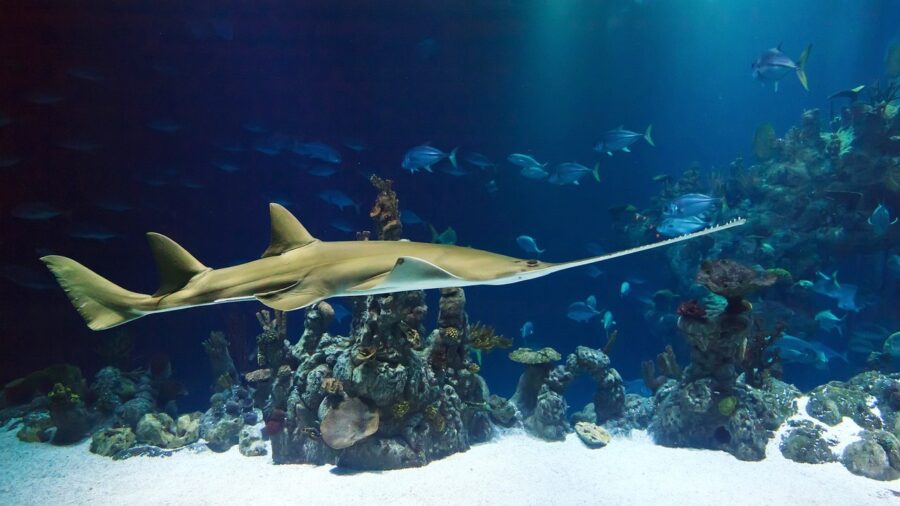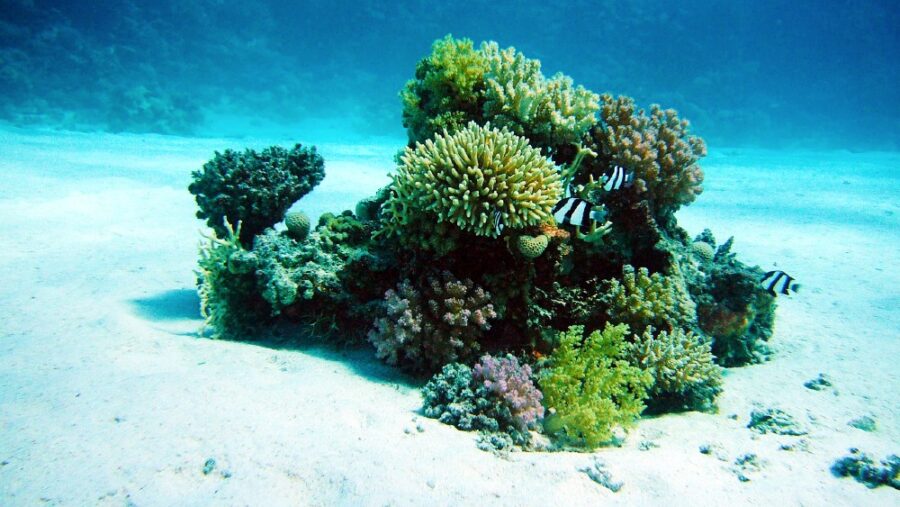Transparent Creatures Eating Weird Snack In Ocean Deep

A group of marine biologists have teamed up off the coast of Puerto Rico to study deep ocean-dwelling creatures known as isopods to find out what they eat. The clear-bodied creatures are odd to look at, and there’s a lot we don’t know about them because they’re so elusive, living in the deepest parts of the ocean, far from where light penetrates. The scientific study of these creatures revealed that they’re munching on plant matter from Sargassum algae, previously thought only to be a food source for upper ocean animals.
The team of scientists made up of researchers from the Woods Hole Oceanographic Institution, the University of Montana, SUNY Geneseo, Willamette University, and the University of Rhode Island set out to study life deep in the Puerto Rico Trench.
In its long, transparent front appendages, the isopod had a piece of Sargassum algae, common on the surface of the ocean, but never before recorded at such a depth.
Since it’s the deepest point in the Atlantic and Caribbean oceans, life at the bottom of it has proved difficult to study, and the isopods that reside there have only been seen by humans on two occasions in known history. In addition to the lack of light, the pressure at that depth is about 1,000 times what the atmosphere alone causes, and there’s what’s called a negative gravitational anomaly so strong that it actually causes the ocean to dip, making exploration difficult.
Due to the dangers of a crewed descent, the researchers used a deep submersible vehicle known as Alvin. Alvin found an isopod swimming at a depth of 3.7 miles below the surface, and when viewing Alvin’s monitors, researchers discovered that it was eating something from the surface. In its long, transparent front appendages, the isopod had a piece of Sargassum algae, common on the surface of the ocean, but never before recorded at such a depth.

These adaptations suggest that long-term evolution at the bottom of the Puerto Rico trench has allowed these odd-looking creatures to thrive in a deep sea environment that’s much more closely connected to the surface than ever imagined.
What the team discovered is that not only are the delicate isopods eating algae that sinks from the surface but they are adapted to locate and consume it on the ocean floor by swimming backward and upside-down, collecting bits of algae as they go.
This ability is a new revelation for the study of deep-sea creatures, as it was not previously known what they eat. It makes sense that their sources of nutrients would come from the surface, since no light penetrates to the depth at which the isopods live, around 3.6 to 3.8 miles deep.
Isopods have evolved with features that allow them to chew the sunken Sargassum algae, with serrated, almost tooth-like mouthparts. The delicate creatures also have bacteria that live in their guts that help them to digest the plant matter, say researchers. These adaptations suggest that long-term evolution at the bottom of the Puerto Rico trench has allowed these odd-looking creatures to thrive in a deep sea environment that’s much more closely connected to the surface than ever imagined.
Since it’s the deepest point in the Atlantic and Caribbean oceans, life at the bottom of it has proved difficult to study, and the isopods that reside there have only been seen by humans on two occasions in known history.
This discovery means that what happens on the ocean’s surface affects the isopods and their food source far more than was previously understood. Differences in ocean temperature, light penetration, and die-offs caused by inundations of fertilizers used in agriculture could have a huge impact on these deep-dwelling isopods.
The animals living in the deep ocean regions, like the algae-eating isopods, are adapted to the unique set of circumstances they’re surrounded by, but now we also know that their deep-sea environments are impacted more directly than previously assumed by surface activity.
Source: The Royal Society Publishing












